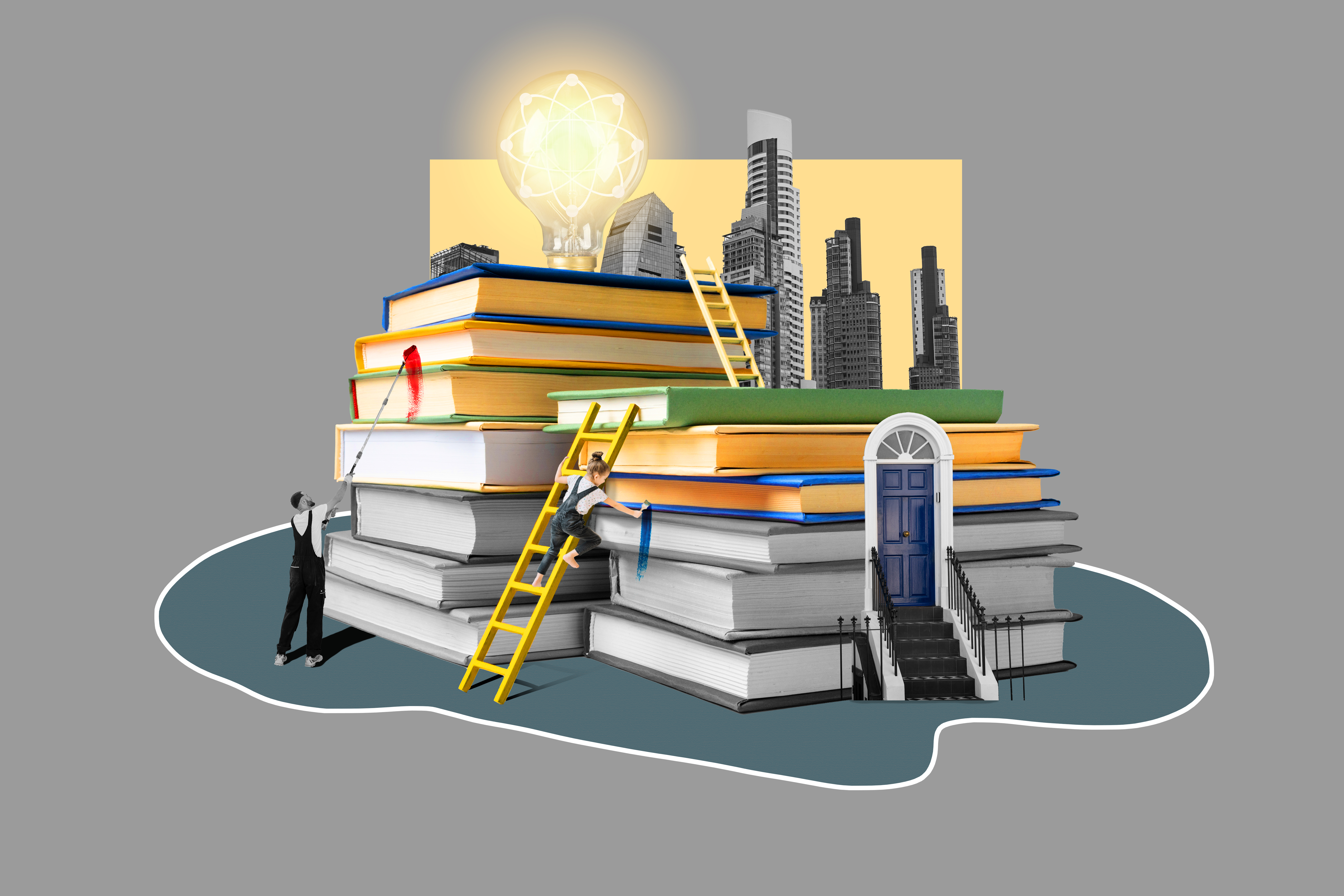In an age of information overload and global complexity, the ability to think critically has become more vital than ever. In Singapore, where education has long emphasised academic rigour, the spotlight is now shifting towards nurturing students who can question, evaluate, and adapt.
Academic excellence doesn’t always translate into problem-solving capability and creativity. When faced with complex, real-world problems, most students struggled with understanding the pain points and finding potential logical solutions. Individuals do need it to challenge assumptions, analyse situations, and make informed decisions. In fact, several notable figures like Chan Chun Sing (Former Education Minister of Singapore) and Tan Chorh Chuan (Former President of the National University of Singapore) have acknowledged that innovation mostly stems from the individual’s ability to adapt and think independently.
That’s why Singapore’s education system has incorporated critical thinking across the nationwide curriculum. From assessing the reliability of digital information to evaluating inflation trends and the cost of living, students are encouraged to adopt innovative approaches towards solving real-world problems. That being said, we have further explored how critical thinking has become an indispensable part of Singapore’s education system.
What is critical thinking?
Critical thinking is an individual’s ability to make well-informed, research-based decisions. You do not trust any information or fact just based on its face value or the integrity of the source. Rather, you use analysis, evaluation, and inference to decide whether it’s believable or not.
Practically, CT involves:
- Breaking down the information provided to you into smaller components. This is to better understand the implications and relationships.
- Assessment of the source’s credibility and deciding if the arguments presented are strong enough to carry on or not.
- Drawing logical or reasoned conclusions based on evidence and facts. It also involves detecting any possible consequences of the decision to be made.
This entire approach contradicts rote memorisation. After all, in the latter, students mostly believe the procedure or the fact without analysing if there’s a practical logic underneath it or not. Memorising lessons does bring academic excellence. However, it doesn’t equip them with the power to navigate through complex, real-world challenges and acquire insights.
Every critical thinker demonstrates the three most crucial skills or competencies. Here’s how!
- Weighing evidence: Rather than straightaway believing the facts, they dig deep and unravel the truth. They assess multiple perspectives to decide if the sources are reliable and credible enough.
- Questioning assumptions: Accepting claims without scrutiny is not their forte. Instead, they challenge the beliefs, questioning the logic or meaning every now and then.
- Drawing reasoned conclusions: Critical thinkers leverage structured reasoning and logic to arrive at defensible arguments. They do not prefer jumping to conclusions under the influence of age-old beliefs.
Evolution of Singapore’s Education Framework

Meritocracy was deeply rooted in Singapore’s traditional education system. Students focused solely on rote memorisation for the high-stakes tests they had to take throughout the years. It did help them achieve stellar excellence in academics, but it couldn’t equip them with creativity and innovation. That’s why the Ministry of Education adopted a more holistic approach. Its primary goal was to encourage and foster core competencies like resilience and critical thinking.
Teach Less, Learn More (TLLM) was the first initiative from the Ministry of Education adopted in 2004 that laid the cornerstone of a remarkable evolutionary era. The primary goal was to shift the focus from rote memorisation to in-depth learning engagement. Apart from this, a few key reforms that helped the Singaporean education system to become more competitive are described below.
- As a part of the EdTech Masterplan 2030, the Ministry of Education launched the Digital Literacy Framework. It helps students evaluate bias and scores, think ethically while handling digital content, and solve problems using tech tools.
- Interdisciplinary learning is deeply integrated in MOE Kindergartens and Primary Science curriculum in Singapore. It encourages students to ask questions, form hypotheses, and investigate real-life issues.
- Character & Citizenship Education (CCE) uses real-life examples like civic responsibilities and moral dilemmas to help students develop empathy and ethical reasoning.
- The National Institute of Education, along with MOE, has started to apply “Science of Learning” insights, like neuro-imaging. It helps them to personalise teaching and stimulate inventive and critical thinking.
- As a part of the SSTRF Project, led by CPDD, educational institutes use open-source mathematical simulations for primary students. Its primary goal is to foster metacognition and adaptive thinking.
Benefits of critical thinking for students
Greater innovation and creativity
Once critical thinkers question the prejudiced assumptions and explore multiple perspectives, they move beyond age-old practices. It allows them to look at the problem with a new vision, compelling them to seek creative approaches. During Singapore’s Applied Learning Program, students had to reduce plastic waste in their schools. Due to the lack of any pre-defined solution, they focused on collecting data and engaging the stakeholders. Critical and inventive thinking allowed them to propose a wonderful solution in the form of a reusable container rental system.
Enhanced problem-solving in unfamiliar contexts
Rather than using the formulas or concepts learned before, students put more emphasis on assessment through critical thinking. Identifying the relevant factors and applying logical reasoning takes top priority to ensure one can conclude with higher efficacy. For example, students developed an application that connected food donors with charities during the National Youth Technopreneurship Challenge.
Improved communication and collaboration
Students applying critical thinking skills can articulate ideas more effectively. The moment they present opinions and perspectives not scripted from before, meaningful discussions and debates occur. Working in teams with others becomes easier, with no prominent communication siloes disrupting collaboration. Take presenting a research paper on urban sustainability as an example! Students can leverage critical thinking to present reasoning, reconcile multiple perspectives, and defend their ideas before a panel.
Adaptability and the power to remain resilient
Rather than getting frenzied in difficult situations, critical thinkers remain composed and maintain a calm approach. It allows them to analyse the problem effectively and consider different perspectives unbiasedly. Thanks to the clear mind, they can modify their strategies as and when needed, ensuring the solutions can be more effective with time. For example, during the pandemic, students had to quickly adapt to digital learning by reflecting on the challenges and adjusting their study routines.
Classroom strategies that foster CT

Inquiry-based learning
It allows students to translate into active participants from being mute spectators in classrooms. Rather than nodding their heads in agreement to everything being said, they raise questions. Hence, curiosity starts leading learning, helping students build their knowledge through thorough investigations. Mayflower Secondary’s geography department gave a task to Secondary 1 students to investigate sustainability by constructing flowerpots from recycled bottles. Every student had to design investigations, collect relevant data, and communicate their findings at the school’s open house ceremony.
Socratic discussion
Questioning the assumptions allows students to form structured dialogues easily. Here, teachers offer end-to-end guidance to students, helping them respectfully challenge ideas. Argumentation is encouraged throughout, helping individuals to build reflective thinking skills.
One of the best examples to understand this practice would be the concept of “Socratic Circles” used at Paya Lebar Methodist Girls’ School.
- Students take time to form reasoned dialogues and not rely on quick answers, which can be wrong and lack any logical foundation.
- A platform is created where individuals provide strong evidence, justify their opinions, and refine their ideas through critical thinking.
Problem-based tasks
Most Singaporean education institutes encourage the development of applied critical thinking skills by presenting real-world problems to the students. They are given a structured guide, according to which they have to investigate, propose, and evaluate the potential solutions. In addition, they also need to identify the challenges they may have to face ahead in their career.
- It helps strengthen perseverance by allowing students to dwell on solution-oriented thinking.
- This approach requires ethical reasoning and application of interdisciplinary knowledge.
- Real-world contexts like poverty, climate change, urban planning, and inflation are leveraged.
MOE redesigned the P5 Science syllabus in 2025 to help students cultivate critical analysis and scientific thinking. It covered various topics from P3 and P4 while preparing them for PSLE and P6.
Collaborative projects
A group-based learning approach helps students brainstorm different ideas and explore multiple perspectives harmoniously. They are assigned diverse roles, usually based on a detailed SWOT analysis.
- Students can easily develop core competencies, including negotiation, collective reasoning, and the art of compromise.
- This strategy fosters open-minded thinking through peer-to-peer connections.
As a part of the MOE initiative, primary math classrooms used a project named “Authentic Shopping Experiences” in 2023 to help students learn collaboration. They had to play the role of cashiers, promoters, or customers. From designing budgets to calculating the changes, students worked in groups to enjoy a realistic shopping experience.
Assessment for learning
Teachers assign different types of assessments to decide whether the students’ thought process is on the right track or not. For example, MOE’s SLS is now being integrated with an AI-driven Short Answer Feedback Assistant.
- It encourages formative feedback loops so that students can improve their reasoned judgment skills easily.
- Open-ended questions are often incorporated in the assessments to understand the depth of an individual’s perspective.
Common challenges & how schools can overcome them
Despite bringing so many benefits to the table, embedding critical thinking in the current education system is cumbersome. Only by addressing these barriers can schools and educational institutions bring real change. Below are some of the problems that will arise with CT integration.
- Teachers struggle with balancing the pressure of completing the illustrative syllabus with deep learning practices. Hence, they end up with limited time to hold open-ended discussions.
- Not all professionals are trained in managing CT-based classes. Rather, most teachers focus on the traditional, lecture-based education models.
- The Singaporean exam structure has high stakes. Hence, students are forced to resort to the rote memorisation technique.
To overcome these hiccups, schools should focus on implementing proper solutions. Here’s how!
- Collaborative projects spanning multiple subjects will help students develop interdisciplinary learning.
- Dedicated CT modules will allow individuals to nurture reasoning, evidence evaluation, and argumentation.
- Teachers also need to embrace continuous learning models to understand how CT can be integrated into daily classrooms and discussions.
The role of parents and enrichment providers

It is not just the schools where CT has to be developed. Learning starts from the home, which is why parents and enrichment providers will have a big role to play. Here’s how!
Encouraging at-home questions
Asking open-ended questions through daily interactions will help parents incorporate CT easily. Prompts like “How would you solve this problem differently?” or “Why do you think it happened?” will help children evaluate the situation from a different perspective.
Choosing enrichment programs that emphasise discovery
Holiday programs and after-school training classes must be chosen carefully. Parents should opt for classes where their children will be encouraged to explore the topics rather than sticking to the rote drills. Investigation challenges, project-based learning, and design thinking are the most effective programs that will help children develop CT.
Creating a safe space
Children often cower back in fear of rejection and mockery when asked to speak publicly. So, it’s the responsibility of parents to create a safe space where the young learners will feel encouraged to come to the front and share their opinions or question the assumptions.
Modelling through decision-making
Mentors and parents should adopt an explanatory approach. By doing so, they can provide proper reasoning and logic behind their beliefs or actions, thereby encouraging children to adopt critical thinking practices.
How AlphaGen Learning build critical thinkers?
AphaGen Learning has revolutionised learning by transforming complex logical and technological concepts into age-appropriate models. Our USP is that we break down advanced topics that are usually taught to kids of older age groups into bite-sized modules. This is to ensure younger students can master these concepts with ease.
- We break down the complex topics into age-appropriate sections. It allows young students to grasp advanced concepts like AI and coding. They don’t feel the immense pressure of encountering such events and can smoothly transition from classroom discussions to next-gen learning.
- Our instructors encourage students to write code, compelling them to form hypotheses and iterate simultaneously when faced with errors. This structured practice helps them to develop important skills like perseverance and logical reasoning.
- We keep relatively shorter classes to promote greater engagement at an individual level. Every student receives custom support and challenges that are aligned with their learning pace and thought process.
- Learners are made to participate in sessions where they have to evaluate outputs from AI models and refine their prompts. Through this, we help them learn cause-effect relationships, improve result-key aspects, and assess the model’s accuracy levels.
Conclusion and next steps
Critical thinking is the key to unlocking a broader perspective for assessing and evaluating contexts associated with real-world problems. The Singaporean education system has now embraced a holistic approach through which they train students to shift from rote memorisation. From inquiry-based discussions to collaborative projects, numerous practices are adopted at schools and colleges to promote reasoning, evaluation, and assessment.
So, if you want your child to develop critical thinking, it’s time you took the next step forward. With AlphaGen Learning, you can expose your kid to advanced learning, like coding, AI, and many more. Sign up at https://alphagenlearning.com/signup/ and book a free trial now to get started!




